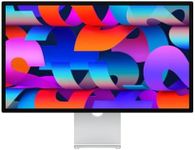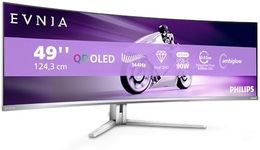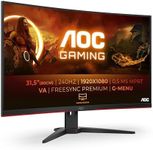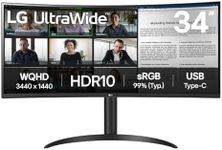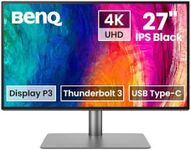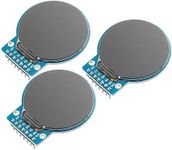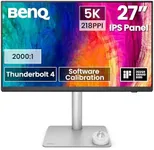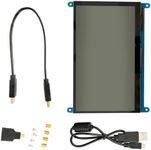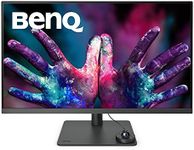Buying Guide for the Best Mac Compatible Monitors
Choosing the right Mac-compatible monitor involves understanding your specific needs and how different specifications can meet those needs. Whether you're a graphic designer, a gamer, or someone who needs a monitor for general use, knowing what to look for can help you make an informed decision. Here are some key specifications to consider when selecting a monitor for your Mac.ResolutionResolution refers to the number of pixels on the screen, which affects the clarity and detail of the image. Higher resolutions, like 4K or 5K, provide sharper images and are ideal for tasks that require detailed visuals, such as graphic design or video editing. For general use, a Full HD (1080p) resolution might be sufficient. Consider what you'll be using the monitor for and choose a resolution that matches your needs.
Screen SizeScreen size is the diagonal measurement of the monitor's display area. Larger screens can enhance productivity by providing more workspace and are great for multitasking. However, they also take up more desk space. Common sizes range from 21 to 32 inches. If you need a lot of screen real estate for detailed work, opt for a larger monitor. For everyday tasks, a medium-sized screen might be more practical.
Panel TypeMonitors come with different panel types, such as IPS, TN, and VA. IPS panels offer better color accuracy and wider viewing angles, making them ideal for creative professionals. TN panels are generally cheaper and have faster response times, which can be good for gaming. VA panels offer good contrast ratios and are a middle ground between IPS and TN. Choose a panel type based on what you prioritize: color accuracy, speed, or contrast.
ConnectivityConnectivity options determine how you can connect your monitor to your Mac. Look for monitors with USB-C or Thunderbolt 3 ports for seamless compatibility and the ability to charge your MacBook. HDMI and DisplayPort are also common and can be used with the right adapters. Ensure the monitor has the ports you need for your setup and any additional devices you might want to connect.
Refresh RateRefresh rate is the number of times the screen updates per second, measured in Hertz (Hz). Higher refresh rates, like 120Hz or 144Hz, provide smoother motion and are beneficial for gaming and fast-paced video content. For general use and office work, a standard 60Hz refresh rate is usually sufficient. Consider what type of content you'll be viewing most often to determine the appropriate refresh rate.
Color AccuracyColor accuracy is crucial for tasks that require precise color representation, such as photo editing and graphic design. Look for monitors that cover a high percentage of color spaces like sRGB, Adobe RGB, or DCI-P3. Monitors with factory calibration can also ensure better color accuracy out of the box. If color accuracy is important for your work, prioritize this spec.
ErgonomicsErgonomics refers to the monitor's adjustability features, such as tilt, height, swivel, and pivot. These features can help you create a comfortable and healthy workspace by allowing you to position the monitor at the right height and angle. If you spend long hours at your desk, look for a monitor with good ergonomic options to reduce strain on your neck and eyes.

